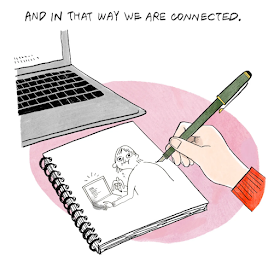Thanksgiving
week, and all across the continent folks are discussing recipes, menus, and the
now-ubiquitous “here come the holiday blues.”
American
Thanksgiving centers around a single meal because the story attached to the
national ethos involves a single holiday feast.
Whether
true or (most likely) half-true, a tradition that follows most Americans
contains memories of these family get-togethers. I remember my mother telling me about the
Thanksgivings of her childhood when I, her Israeli daughter, had no notion what
it was about, nor the image of Indians sitting together with Pilgrims in the
seventeenth century. I only knew the nostalgia in her eyes for a country she had
left to go and help build the Jewish state. But we always remain the children we
were, years later and miles away.
Holiday
meals are fine. But I have come to focus on the matter of the underlaying
theme. Thankfulness is not for one day a year. It’s a good habit for every day.
I
now end each day, just after turning off the lights, with at least three things
I am thankful for that happened that day. Not general things, but specific ones. Some
days are particularly challenging, and I count things that could have happened
but (thankfully) didn’t. Most days (again, thankfully) it’s easy, because life’s
gifts are more abundant than my normal state acknowledges.
This
routine has a way of strengthening itself. It’s a good habit to develop. I’m
thankful to the person who suggested it. I no longer remember who it was but Thank
You.




